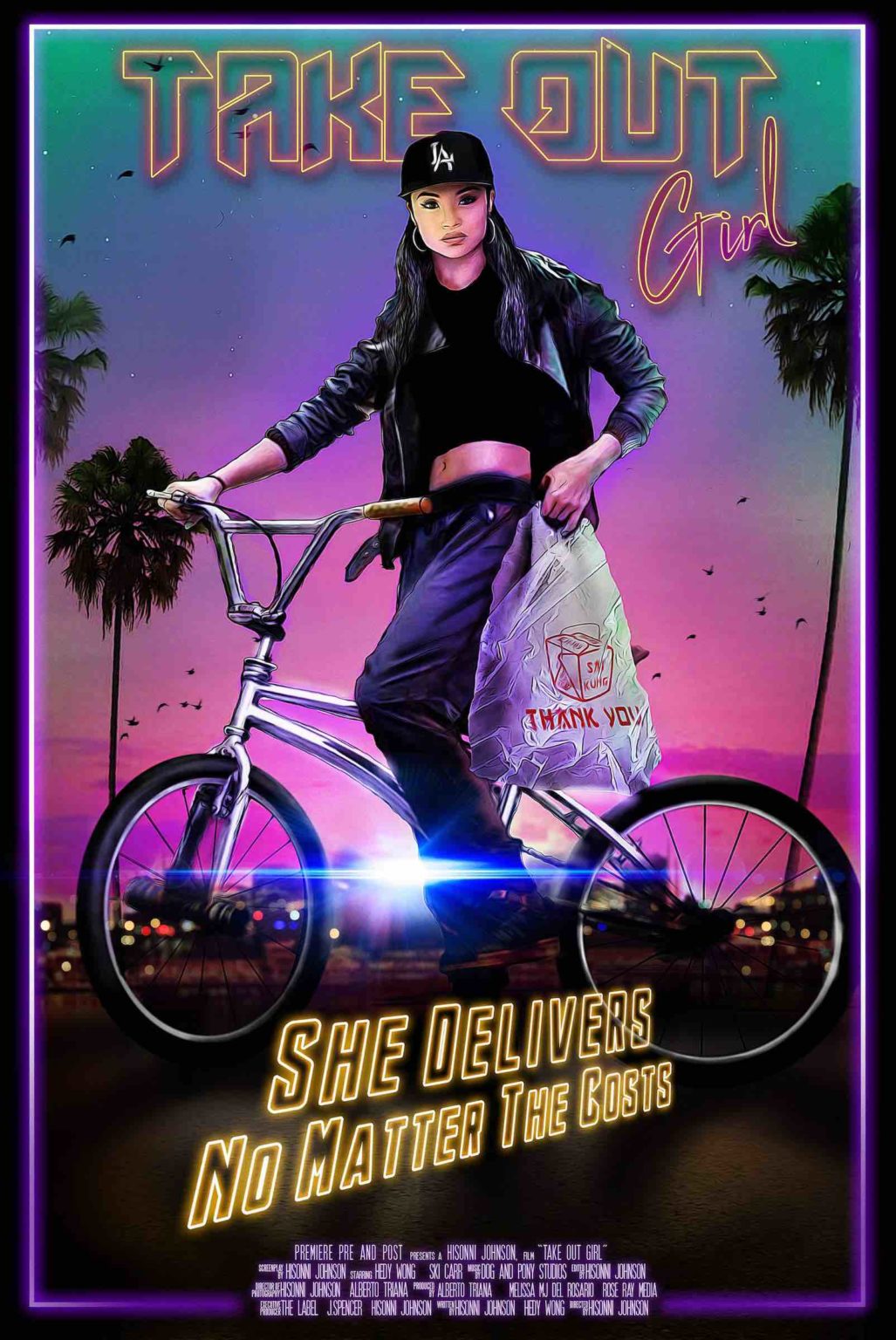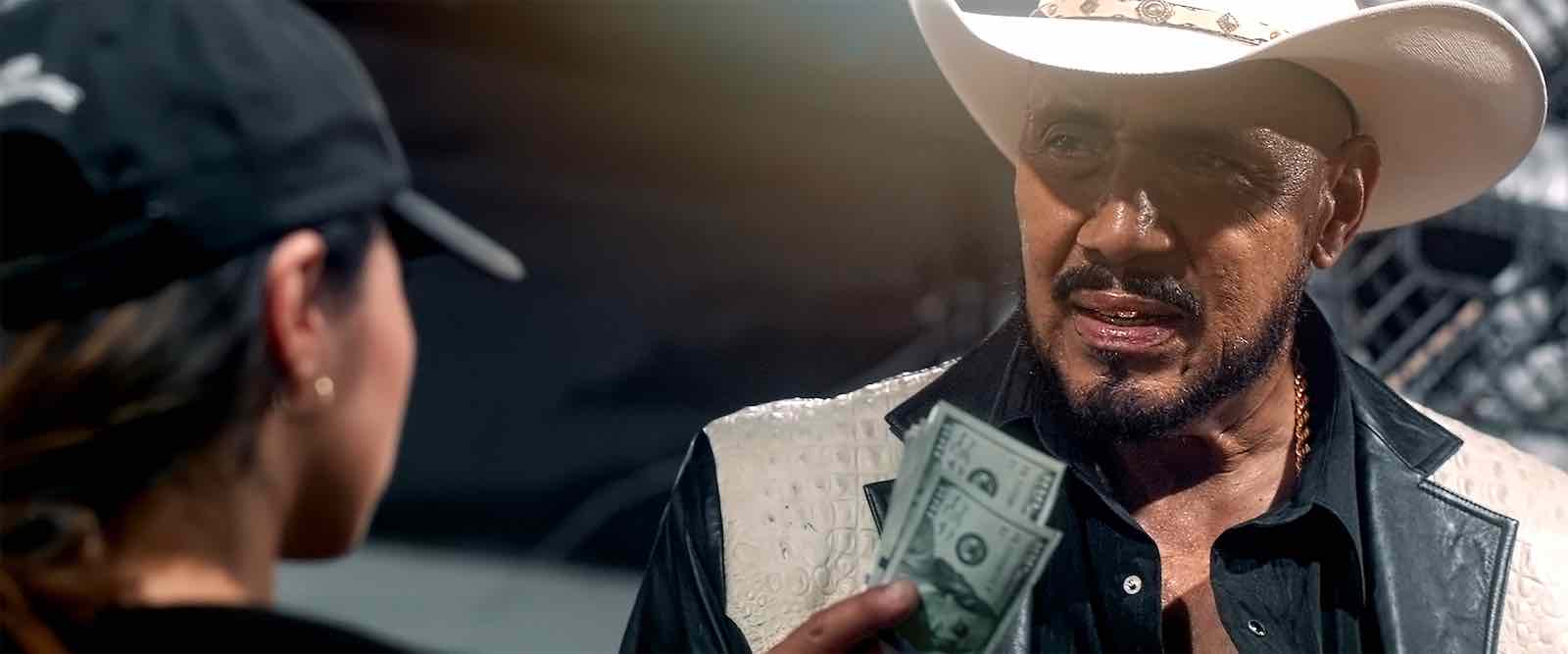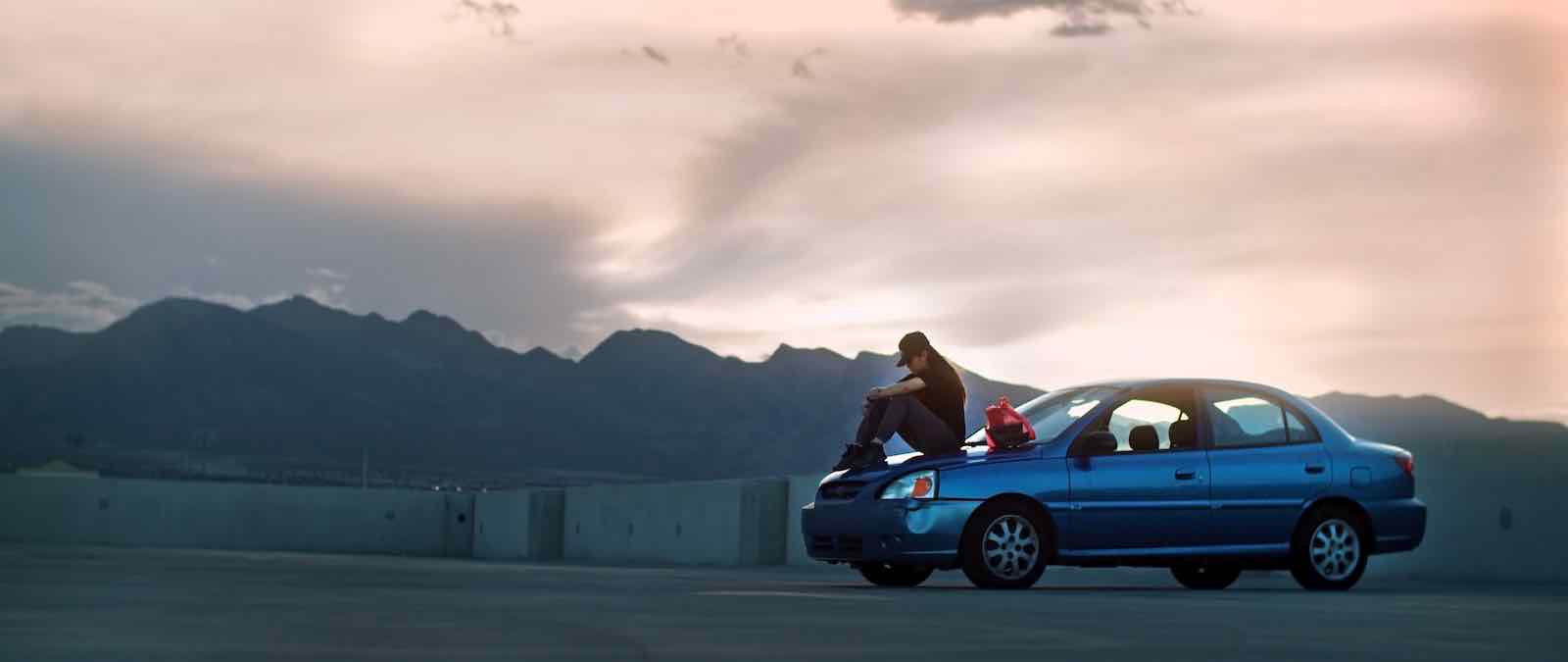
Cancel Uber Eats – ‘Take Out Girl’ will satisfy all film fans
If you’re looking for an indie film that depicts the true struggle of low-income minorities, then look no further than the satisfying Take Out Girl. Hailing from director Hisonni Johnson and writer/lead Hedy Wong, Take Out Girl promises a look at what drives a person to drug dealing and how circumstances can lead them further from any desire to “go clean”.
Take Out Girl definitely promises something truly satisfying for fans of good film. Lucky for you, Film Daily has all the info that you need to know about Take Out Girl.

What is Take Out Girl about?
Take Out Girl is a film that showcases “the struggles that minority and low-income families deal with on a day to day basis. Showcasing storylines of systematic oppression of the working class, lack of access to adequate healthcare, the war on drugs, and addiction, Take Out Girl is a timely and gritty story of one girl’s fight for survival.”
The synopsis for Take Out Girl follows:
“Tera Wong, a desperate 20-year-old Asian girl, drops out of college to help work at her family’s failing restaurant. With her mother suffering from back injuries, and unable to seek medical care at the expense of closing the restaurant, Tera decides to take matters into her own hands and parlays her Chinese food delivery expertise into a profitable drug hustle.
Financially trapped in a crime and violence-filled Los Angeles territory referred to as the ‘Low Bottoms’, Tera seeks help from a local drug kingpin, Lalo. With the cash rolling in, Tera intends to move her family restaurant to the suburbs and go clean. But after a series of tragic events, the dream Tera built on a foundation of lies comes crashing down, only to realize that she and Lalo have more in common than she could have ever imagined.”

Who is in Take Out Girl?
Hedy Wong stars as Tera Wong in addition to penning the script for Take Out Girl, her first official screenplay.
Ski Carr plays the Lalo, the drug kingpin that Tera works for. Carr, best known for his stage work, has been in productions of Guys and Dolls, Much Ado About Nothing, and Othello amongst others.
Lynna Yee plays Wavy Wong, Tera’s mother. Wong has worked with some of the best known Asian American actors in Hollywood, such as James Kyson Lee, Daniel Dae Kim, and Camilla Mana. Best known for her voiceover work and stand-up comedy, Yee is also a writer, producer, and songwriter.
J. Teddy Garces and $tupid Young round out the cast as Hector and Police Officer respectively. $tupid Young, who is known for his singles “Mando” (ft. Mozzy) and “Trust Nobody”, also penned and performed the title track for Take Out Girl.

We have so many questions about Take Out Girl now.
Excellent! We have an interview with the director of Take Out Girl Hissoni Johnson and the star and writer of the film, Hedy Wong below. Here’s what they had to say about their stellar film.
People often shine a black and white light on life in the projects, but Take Out Girl tries to shine a more grey, realistic light, showing that it’s a cycle of violence and crime that is nearly impossible to break, even if you do the right thing. What inspired this more realistic approach to the film?
Hisonni: “What inspired this approach to Take Out Girl was my life lol. I never knew my father, and my mother was an exotic dancer. At one point, my mother struggled with drug addiction too. I was young but was aware enough to know the things my mother did weren’t . . . Standard. That society wanted me to be ashamed of who she was.
What society didn’t realize was that my mother saved so much money as a dancer that she was able to support five children with her earning YEARS after she stopped performing. And although I only had my mother in peak form for maybe two years of my life because of her addiction and later illness . . . It was enough time for her to establish my sense of morality, my work ethic, and my positive sense of self.”

“That’s a task usually takes a parent a lifetime to accomplish, so in my eyes, she was a wonderful mom. But I know some would argue that you know? My life is chalked full of gray areas like this. So it was good to explore ideas of good and bad/right and wrong using my experiences as a basis.”
Hedy: “I started writing the treatment at a point in my life where I needed to get things off my chest and it was therapy to write from a place of truth. And the truth is half of people will stay in that environment and try to make it work the best they can. You can’t really see it as a bad cycle when it just feels like home.”
Was Hedy always the main choice as lead actress? Or were there other actresses in mind?
Hisonni: “100%. Hedy’s personality is undeniably unique and incredibly intriguing. I knew from the moment we first spoke to her that she had qualities that could engage viewers. Yes, she’s a wonderful actress but her walk, voice, and overall swagger . . . You’re just born with something like that. It’s one of a kind.”
Even with such a small budget, it’s clear everyone pushed their limits to make this film what it is. Tell us about your experiences on set.
Hisonni: “Correct. Everyone in/on this film pushed themselves to the limit. I consider myself a great captain, but I got lucky on this one. Each cast and crew member pushed themselves to be better than they ever were on this film.”
“They believe in the movie, and we genuinely became a family. You felt like you couldn’t fail even when things went wrong because so many people had your back. It’s an atmosphere I hope to replicate in every film I make from now on.”

Hedy: “Everybody, from crew to cast, contributed beyond their assigned role in producing this film. This film was definitely a collaborative effort from everybody involved. We’re the definition of a “passion project”.
“I feel very blessed to have met a genius filmmaker like Hisonni who believed in my project and knows how to get blood out of stone. On set, we definitely had a lot of moments where everybody felt like there were real movie magic moments happening in the air.
A big part of this film was getting rapper $tupid Young not only involved in a small role, but also with his song as the main title song for Take Out Girl. How did he get involved?
Hedy: “I hit him up to play a role of my cousin in the film but due to scheduling conflicts, he couldn’t make it. A year later, when the movie was done, I reconnected with him to see if he could lend his song for the trailer. I showed him the first 6 minutes of the film and he still expressed interest in doing a cameo, which worked out perfectly because there was a scene we never got a chance to film during principle production.”
“I am forever grateful for his support because he is a real-life symbol of a minority amongst minorities rising above his environment and making a better way for himself and his family. I know a lot of the youth in my community look up to him like a superhero because they haven’t seen his type of representation in the limelight in a long time.

Take Out Girl features a very diverse cast, with the leads all being Asian American. But it’s not just on screen where the film championed diversity. Why was it important that this project be just as diverse behind the scenes as in front of the camera?
Hisonni: “Great question. The diversity in front of and behind the camera was of the utmost importance because today’s movie-going audience has the entire history of cinema at their fingertips.”
“They’ve seen every story that there is . . . But not every perspective! So, we assemble a diverse crew because the input from that crew would make our presentation, message, and perspective very unique and hopefully very entertaining.”
“Not to mention, under ordinary circumstances . . . A black man wouldn’t be allowed to direct this film. Black men are expected to make films about police brutality, slavery, and being marginalized. Although I know the importance of speaking on the subjects I listed above . . . I more than my struggles, and I’m more than my suffering.”
“Take Out Girl may not be breaking glass ceilings in terms of revolutionary storytelling, but it brings the house down when it comes to showing the benefits of equal opportunity.”
Even within the projects, there still seems to be a “class” struggle. Those who are high rolling, even if it’s dirty money, see themselves higher than those working more traditional jobs. Even Tera sees herself above a janitor at one point. Why was that important to portray in the film?
Hisonni: “Such a great observation! Take Out Girl is the story of a woman who, in her heart, knows that she’s better than her circumstances dealt upon her, and it’s this belief that propels Tera toward her upgrade from economy to first-class lol. I believe that all great things come from someone who said, “I’m sick of this crap!”
“For example, think about air conditioning. “I’m sick of this hot weather, crap!” Indoor plumbing? Someone said, “I’m sick of this water carrying crap!” and made some moves. So on and so forth. My point is this . . . We’re all born into crap, and it’s those who refuse to accept their struggle/status that creates great luxuries for us all.”

By the time Tera decides to start working with Lalo, we can feel the sense of tension and concern that haunts Tera’s every move. How did you figure out how to translate that fear for the audience?
Hisonni: “I realized a few years ago that every bad thing that’s happened to me… I saw it coming. While writing Take Out Girl, I reflected on all the warning signs I had before life smacked me in the mouth and poured each one of them into the film.”
Throughout everything the Wong family goes through, there’s still a big focus on being there for your family.
Hisonni: “100%. I come from a somewhat broken family. Growing up, I admired all of my Asian friends because their family bond looked unbreakable. I wanted that. So, it felt truthful to write Tera’s family so supportive of one another. I was simply writing what I wanted and what I knew to be true in the Asian community.”
Hedy: “Growing up in an immigrant household, work is life. We learn at an early age to do what we have to do, not what we want to do. But we work in service to the family.”
The way the poster and promotional artwork is designed, it almost feels like Tera is a superhero and Take Out Girl is her origin story. Was it intentional, giving Tera this backstory to make her actions feel more heroic?
Hisonni: “Yes! Tera and Take Out Girl are two different characters for sure. Hedy and I worked hard at deciding when a scene was for Tera and when a scene was for Take Out Girl. Tera’s hat was Take Out Girl‘s cape. Tera’s family is her kryptonite, and the restaurant is Tera’s fortress of solitude!”
When audiences reach the end credits of Take Out Girl, what do you hope they take away from the film?
Hisonni: “I hope they think about Tera’s potential. While writing the film, I’d take moments to think of how successful Tera’s would be on Wallstreet os selling real estate. Then I’d think of how many amazing people we miss out on simply because they have the unfortunate luck of being born in a terrible zip code, you know? I want them to think of that. “
Tell us about your history as a filmmaker. How did you start your journey?
Hisonni: “I started making films with my friends and teammates as a kid! We’d make feature-length films, rent out theaters and show our movies to the entire town. The theater got concessions, but we got to keep the money from ticket sales. We did well with that hustle.”
Who are your current influences?
Hisonni: “I’ve been influenced by Robert Rodriquez. He represents that “By any means, necessary.” style of filmmaking that embodies my life as a filmmaker.
What was the one movie you saw that made you want to go into film?
Hisonni: “El Mariachi and Reservoir Dogs.”
How was working on Take Out Girl? What did you learn from the experience?
Hisonni: “Making Take Out Girl was an enriching experience! I learned that the people you work with have to be more important than the film you’re making. People over product.”
Tell us about your career before you found film.
Hisonni: “There wasn’t a time before film. I’ve done this since I was twelve. Before that, I was waiting for a camera to fall into my lap because we were too poor to get one.”
Where did the concept come from for Take Out Girl?
Hedy: “From my life and from family/friends around me. For example, the Pueblo Del Rio housing projects is where the actor who played my brother (Lorin Alond Ly) is from. Dijon Talton’s Nate character is based on my good friend Nate who also makes a small cameo on a balcony. We have a lot of personal touches like this in the movie.”
What’s your next project?
Hisonni: “I’m directing a short entitled Blunt film next month, and it’s based upon my experience meeting my girlfriend’s mother for the first time. Later in the years, I’m producing and acting as a cinematographer on my homie Alberto Triana’s debut feature film. It’s a revenge flick!”
Have you worked with mentors in the past? How would you recommend people go about finding them?
Hisonni: “In my experience, a great mentor finds you somehow! My mentor became my adopted dad! He was a master photographer that taught me everything he knew and believed I could make a career out of filmmaking. He passed away in 2018, and I dedicated the short film I did that year to him!”
What has been your biggest failure?
Hisonni: “My biggest failure is that my mother will never get to see the things I accomplish. I was too slow.”
Hedy: “Too many to recount”
What has been your biggest success?
Hisonni: “My most significant success is surviving my inner-city neighborhood! I’m from 53206, an infamous zip code in Milwaukee, WI that has been voted “The worst place in America to grow up black.” by Forbes Magazine.”
“It’s an area where more black men are arrested (Per capita) than any other city in the country and Milwaukee has held the titled “Most Segregated City in America” for over forty years.”
Hedy: “Take Out Girl. I’m proud of what me and my team has accomplished so far for it.”
Can we expect to see any episodic television from you anytime soon?
Hisonni: “That’s the goal! I’ve submitted to The WB TV workshop, HBO Director lab, Project Involve . . . The works!!! I submit to workshops and labs every year, and I’m feeling optimistic about my chances in 2020!”
What’s your five-year plan?
Hisonni: “To make another feature film and try to direct episodic television regularly. I want to become part-owner of a movie theater and buy a home. Maybe rent it out. I’d love to have a kid with my girlfriend of 14 years!”
Hedy: “I hope to continue to produce film/tv projects and remain involved behind the scenes as well as in front of the camera.”







